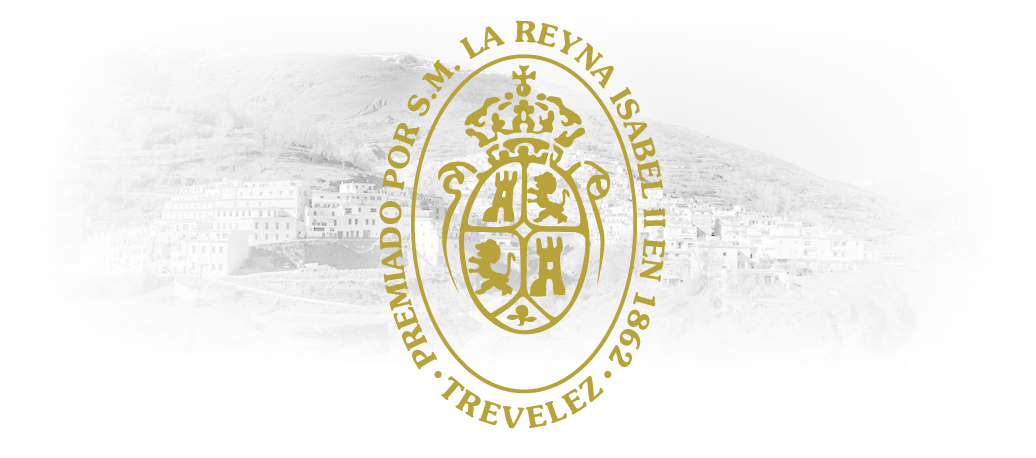The name and prestige of Jamón de Trevélez date back to centuries gone by. When the court tables boasted the best artisan products, and noble diners honoured a delicious meal, Jamón de Trevélez was already an indispensable delicacy.

The most important date in the history of Jamón de Trevélez was 12 October 1862. That year an exhibition took place in Granada to showcase the highest quality products in the region and Queen Isabel II of Spain granted Jamón de Trevélez the privilege to display the “Royal Seal” with the following legend:
AWARDED BY H.M. QUEEN ISABEL II IN 1862. TREVÉLEZ
This same seal can be found at the Trevélez town hall and used to be stamped on every piece of ham, as authentication of its origins. Due to the fame this ham was acquiring, the town hall itself sent out certificates of authenticity from then on. Nowadays this seal can be found on every classified piece, both on the guarantee stamp and in the PGI logo which appears on the label of every piece of ham.
The elaboration of this product in Trevélez and the Alpujarra area has been a tradition for many centuries. Currently the area is home to companies that have been specialising in making this type of ham for more than 60 years.
Generations of ham producers have kept and passed down to others the knowledge, know-how and above all the same artisan selection, salting and curing process that makes this ham unique.
It is currently the Regulatory Board for Jamón de Trevélez PGI who is in charge, amongst other tasks, of assuring and guaranteeing the quality of this Jamón.
HISTORY AND HISTORICAL FIGURES
Jamón de Trevélez has been known in and linked to the Alpujarra area as an unique product for over 200 years. It features in numerous bibliographical references from the 19th century literature from well-known writers of that time.
Pedro Antonio de Alarcón, Spanish writer born in Guadix in 1833, dedicated several paragraphs in his book “La Alpujarra” to Jamón de Trevélez.
The Italian composer Gioacchino Rossini, born in 1792 in Pesaro, Italy, was a renowned gatronomy lover and connoisseur of Jamón de Trevélez. There is an anecdote told by Carlos Azcoytia Luque in his article “Biografía del gourmet y compositor Gioacchino Rossini” (Biography of gourmet and the composer Gioacchino Rossini), which occurred at Rossini’s home in Paris, during a visit from the Spanish composer Francisco Asenjo Barbieri, born in Madrid in 1823. Rossini spoke to him about his collection of violins which included some Spanish models. Surprised at this assertion, he asked where they were from and Rossini answered that they were from Trevélez. He showed his collection, and it turned out that the violins were actually ham legs.
Cervantes also new about this ham, the writer praised it in more than one of his works.
Gregorio Marañón, Spanish doctor, writer and philosopher born in Madrid in 1887, praised Jamón de Trevélez along with his friend, the politician from the Alpujarras, Natalio Rivas. He was a true connoisseur of this product which he consumed quite often. In his “Ensayo apologético de la cocina española” (Apologetic essay on Spanish cuisine), he makes reference to Jamón de Trevélez.
Federico García Lorca, Spanish poet and dramatist born in Fuente Vaqueros in 1898, had a special predilection for Jamón de Trevélez. Ángel Ganivet, Spanish writer and diplomat born in Granada in 1865, was also a Jamón de Trevélez enthusiast.
As we have stated previously, the most important reference in the history of Jamón de Trevélez dates back to 1862, when it obtained the privilege of carrying the seal of Her Majesty Queen Isabel II, who recognised the quality of the ham. This distinction is special since hams display this royal seal and there are very few products awarded such a privilege.
Jamón de Trevélez is also enjoyed abroad. Eugenia de Montijo, wife of Napoleon III y Empress Consort of France, knew of and consumed Jamón de Trevélez, and introduced it to the menus of her royal court. Several international personalities discovered Jamón de Trevélez during their visits and stays in Spain and spread it throughout the world.







